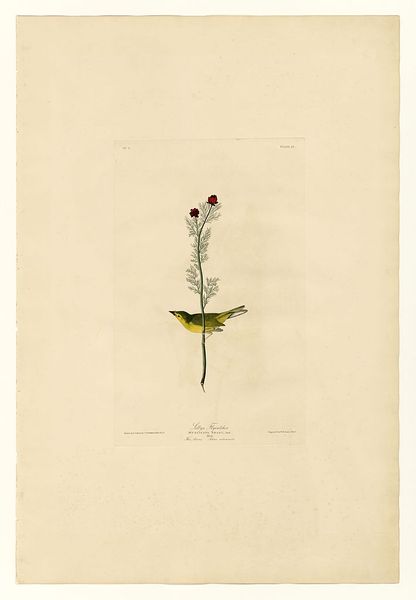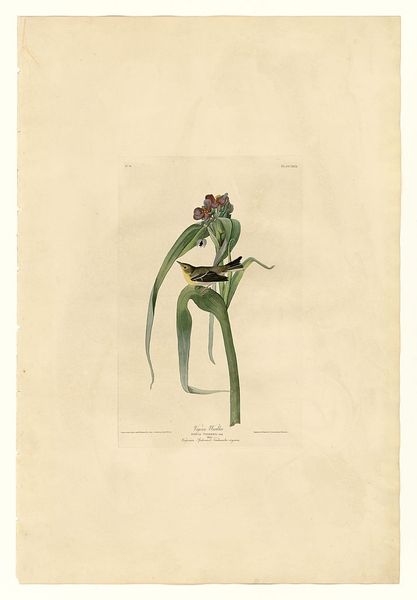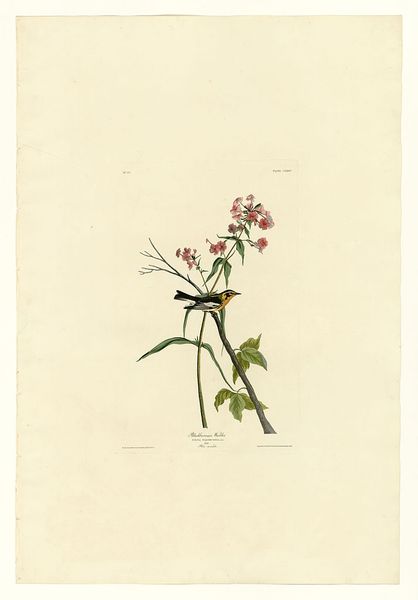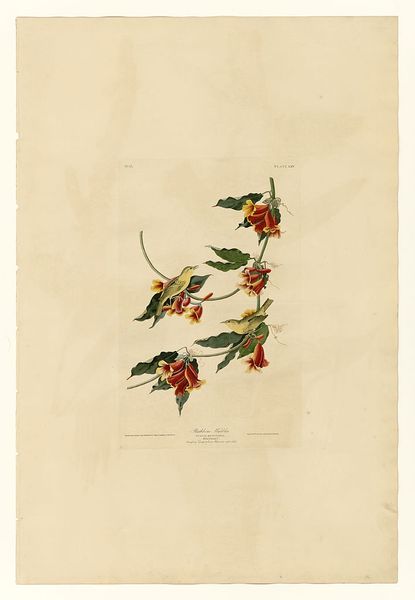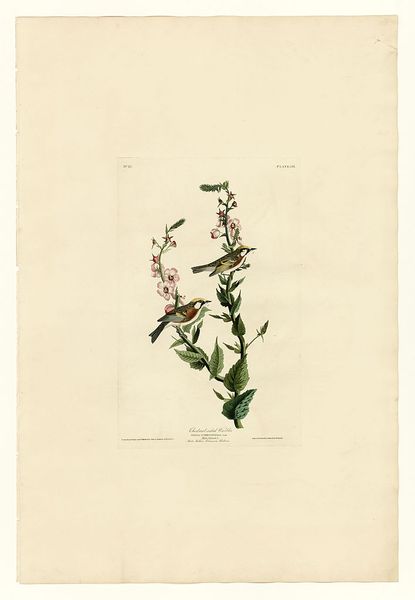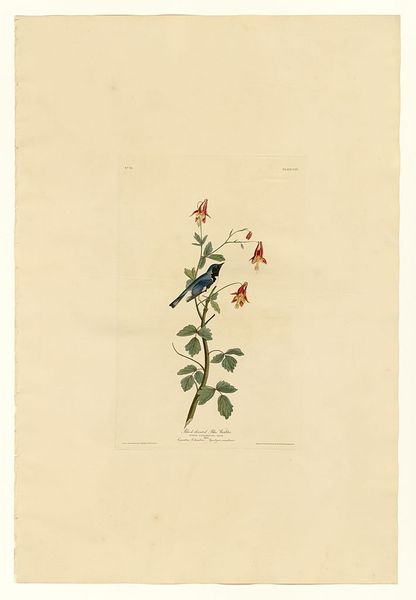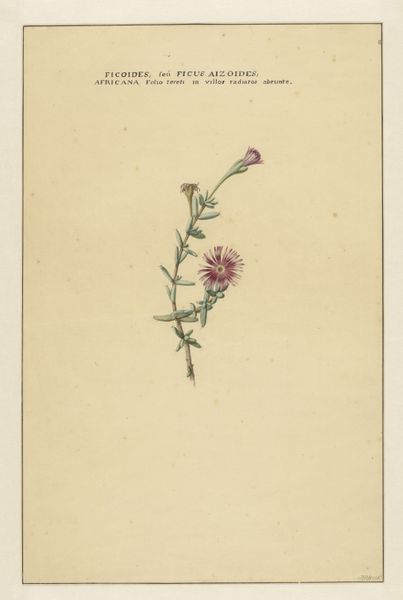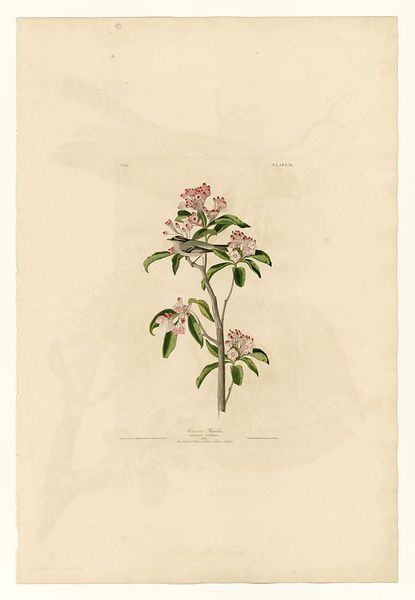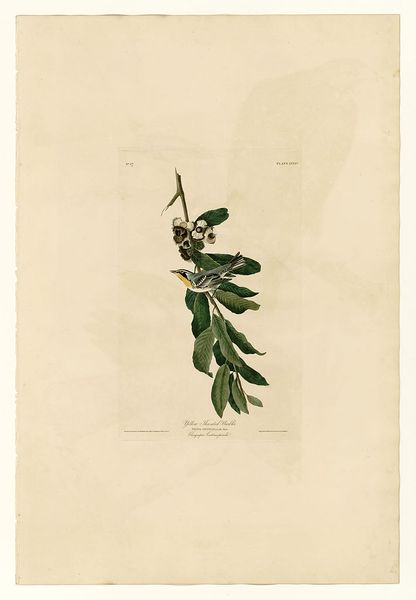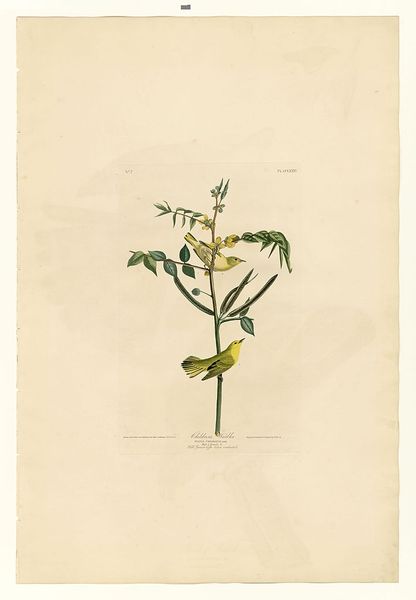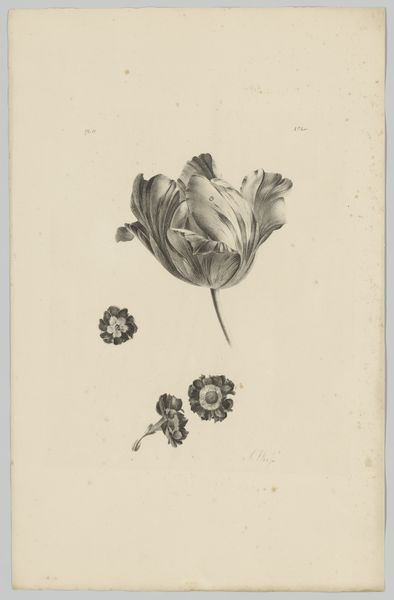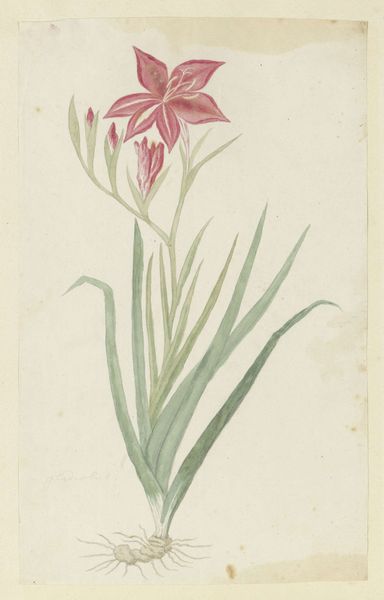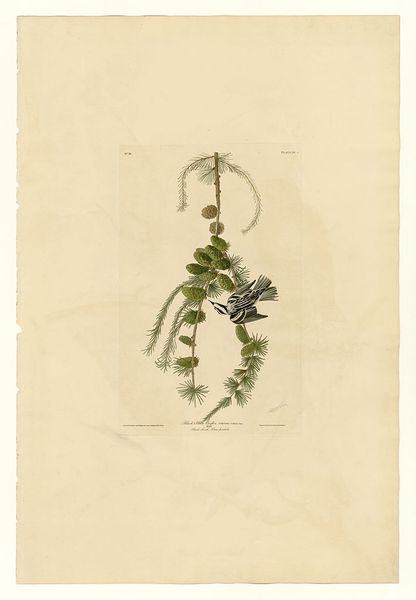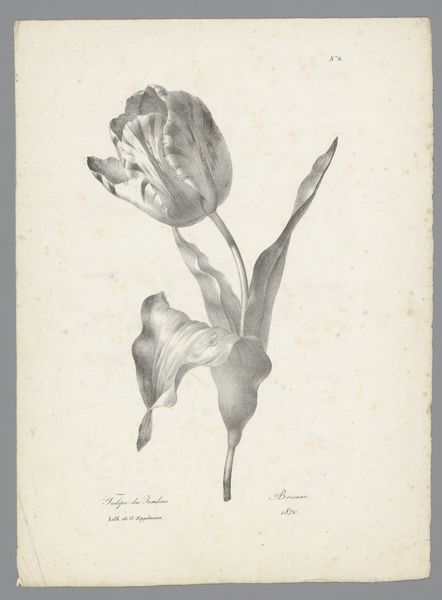
painting, print, paper, watercolor, engraving
#
portrait
#
painting
# print
#
landscape
#
flower
#
paper
#
watercolor
#
plant
#
watercolour illustration
#
botany
#
naturalism
#
engraving
Copyright: Public domain
Editor: Here we have John James Audubon’s “Plate 15. Blue Yellow-backed Warbler”, created using watercolor, engraving, and etching. The details are incredible, but I can’t help wondering, what's your interpretation of this piece beyond its surface beauty? Curator: It's tempting to admire the naturalist detail, isn't it? But I think we can read Audubon’s work as an intersection of natural history and colonialism. The "discovery" and cataloging of these birds coincided with the displacement of Indigenous populations and the exploitation of natural resources. Editor: Oh, I hadn’t considered that. So you're suggesting the act of documenting nature itself can be seen as an exercise of power? Curator: Precisely. Who gets to name, to classify, to claim knowledge? These are not neutral acts. And how does Audubon’s romantic, almost idyllic depiction of nature perhaps mask the violence inherent in westward expansion? Consider, also, the role of these images in promoting a particular view of the American landscape, one that perhaps erased the presence and knowledge of those who had lived there for centuries. Editor: That completely shifts how I see it. It's unsettling to think of beauty coexisting with such complicated histories. So much of our understanding of art comes from a Western, often colonial, viewpoint. Curator: Absolutely, and it is our responsibility to continuously question whose stories are centered, and who are marginalized in these narratives. Audubon’s meticulous depictions contributed to a specific, and highly influential, understanding of the American wilderness, and unpacking the layers of power and ideology within it is critical. Editor: It really brings home the point that even seemingly objective art can be deeply embedded in its socio-political context. Curator: Indeed. By viewing art through this lens, we move beyond mere appreciation and engage in a dialogue about representation, power, and history.
Comments
No comments
Be the first to comment and join the conversation on the ultimate creative platform.
